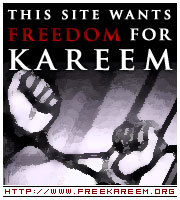[….]
Radio Silence
It could be that the Oct. 31 missile strike has created technical obstacles to issuing video-tapes, which would explain why there has not been much output from As-Sahab, al Qaeda's media production arm, since the madrassa was hit. But given that As-Sahab's production facilities are unlikely to be located in the remote tribal badlands straddling the Afghan-Pakistani border, technical difficulties are not likely the case.
The lack of a communiqué from al-Zawahiri is much more likely the result of a conscious decision to maintain radio silence because of a breach in al Qaeda's operational security net. In other words, al-Zawahiri has likely survived, and is trying to stay beneath the radar. The strike in Chingai, while it did not eliminate al-Zawahiri, must have come very close to doing so. Al Qaeda views the location and timing of the madrassa strike as a penetration of the movements and schedules of al Qaeda prime. From al Qaeda's point of view (and probably in point of fact), U.S. and/or Pakistani intelligence has come very close to one of its inner concentric security perimeters.
More significantly, al Qaeda at the time of the strike -- and this may still be the case -- did not know where this penetration had taken place. Therefore, it has brought its communications, especially its communication to the outside world, to a grinding halt. And it is going to maintain this posture until it identifies the security breach and seals it. This could be matter of weeks or of months. Once it is confident that it has re-established operational security, al Qaeda will resume releasing video communiqués.
Implications of the Madrassa Strike
Al Qaeda's move deeper underground shows that U.S. intelligence has come very close to triangulating the likely location of al Qaeda's global headquarters. Stratfor has said the districts of Dir, Malakand and Swat in Pakistan's NWFP are probably the areas in which al Qaeda's top leaders are hiding out. The Oct. 31 and Jan. 13 strikes were more or less in the same area, which borders both Dir and Malakand. This suggests that the Chingai-Damadola area is not just an al Qaeda rendezvous point but also a jihadist thoroughfare, especially since it is bordered to the east by Afghanistan's Kunar province, a hotbed of Taliban and al Qaeda activity.
Both strikes also indicate the problem U.S. forces face in conducting counterterrorism operations in Pakistan. While it is easy to engage in a land or air incursion a few miles into one of the seven agencies of the Federally Administered Tribal Areas, it is much more difficult to do so in NWFP because it requires a much deeper incursion into more settled areas. This is something that Islamabad has yet to allow, and Washington continues to oblige.
The two airstrikes have provided U.S. intelligence with a wealth of information, which the United States can use to pinpoint not just the places frequented by al-Zawahiri and his associates but also his actual hideout, as well as other key al Qaeda facilities that probably lie much deeper in the NWFP. This poses a dilemma for al Qaeda, which does not have the luxury to simply shift from one location to another, and this would again explain the decision to go offline.
Al-Zawahiri's statement in the videotape issued after the first airstrike is actually quite telling: "Bush, do you know where I am? I am among the Muslim masses enjoying their care…." Al Qaeda's leaders are likely hiding very close to if not in a heavily populated area that is quite far from the Afghan-Pakistani border. This is actually the best defense the jihadists have in their arsenal; they believe it is unlikely that U.S. forces would conduct a strike so deep inside Pakistan and in an area so densely populated.
Ultimately, finding and hitting al Qaeda's top leaders depends not only on human intelligence but also on the willingness of the United States to accept the risks of carrying out strikes that can actually eliminate al-Zawahiri and bin Laden. The biggest risk, at this point, is the destabilization of the government of President Gen. Pervez Musharraf.[Stratfor]
|

No comments:
Post a Comment